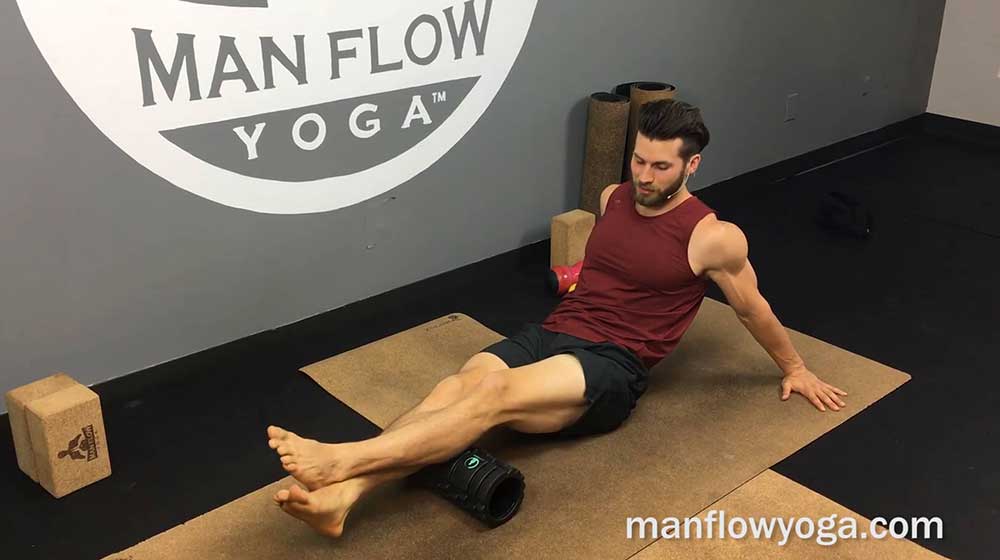There are a lot of fancy products out there boasting some pretty amazing results. I would like to slash the bull crap marketing hype and declare that no matter how expensive the piece of plastic may be, the effectiveness is dependent on the physical intelligence of the user. Now that the air is clear, let’s chat about how we develop our physical intelligence and leverage these tools the best way possible.
First of all, a common misconception is that we can simply smash tissue into submission and it is still myofascial release. Generally speaking, this is a false conception. Let’s chat a bit about the bio-mechanics of connective to tissue to develop a visual of what we are actually doing with self-care tools. Our tissue is comprised of predominately collagen, elastin and ground substance. This ground substance is predominately comprised of chains of sugars and proteins forming a slippery bio-electric mucous lattice we call the extracellular matrix. This matrix is bathed in fluid and permits the sliding of our tissue layers.
Note to reader: If you’re not interested in polysyllabic physiological terminology, skip this next paragraph. I assure you, it’s abundant with analogies to ease the translation process.
Diving into our skin like a magic school bus we start on the surface where we find a living, breathing biome of bacteria, fungus and mites! We dive a bit deeper and find the subcutaneous adipose layer wrapping our whole body except the palms of our hands and feet and is there to provide insulation and whole heap of information as to where our body is in space, temperature regulation, perception of pain and pressure. This is highly innervated tissue and literally holds our form. Our dermal layers need to slide freely with the superficial fascia to allow for ease of movement. As we dive deeper we bump into muscular septa which is wrapping our muscle bellies like a supportive and sensitive bag. We dive deeper into the spaghetti like fascicles which you will notice in the stringy layers of a chicken breast.The spaghetti noodles get thinner and and thinner as we enter into the muscle cells and eventually myofibrils which is where we find myosin and actin climbing each other like a ladder and releasing to relax the muscle. Your muscle is a lot like an extendable hiking pole or camera tripod with smaller tubes wrapped in bigger tubes and the sliding of the layers being mandatory for function. It is crucial for every transition of layer to slide freely or we will experience tissue adhesions, dehydration and over all clunky painful movement. This equates to moving like an ‘average’ American. Let’s be proud of our bodies and move with some Joie de vivre people!
So our body is comprised of an interconnection of sliding bags wrapping more bags and our ease of movement is dependent on the freedom of these bags! When we are repetitive with our movement, fibroblasts begin to developing an abundance of areolar tissue (our bodies internal glue) and with time, will lead to feeling stiff and old. We get these tissue layers to move by shearing and differentiating tissue instead of simply smashing them into submission like you see
with the classic IT band smash.
Pointers
- Use a ball to differentiate muscle bellies instead of simply smashing them
- Use the foam roller to work with muscular attachments (filled with sensory receptors that can help normalize tissue function). Pin tissue down at muscular attachment and with slow deep (sub-painful) pressure, relax joint into the roller. Play back and forth between active and passive movement from this position. Hold for at least 30 seconds.
- Use bands to decompress joints while adding active range of motion
- Explore between passive and active release (movement and no movement)
- Interval between contracting and relaxing to accelerate tissue mobilization
- Follow self-care techniques with integrating movement practice such as over-head squats, planks, downward facing dog, tree pose or most any active yoga position.
Example Techniques
Hip Girdle Release
This technique will be helpful for a high percentage of folks due to our cultures tendency toward excessive sitting.
- Place roller directly under hip bone (remember to focus on attachments with the roller).
- Start with the leg that feels more restricted in the hip flexors. You can find this by exploring lunges on each side and feel for which side has more resistance.
- Start by simply relaxing your hip into the roller and focus on relaxing with slow deep breath work.
- You can then begin to contract your same side glutes (butt muscles) by lifting your leg off the ground and pointing toes. You can help strengthen your butt by writing the ABC’s with your toes, making large letter shapes with your whole leg.
- Remember, when tissue is too short in one place, it generally will lack engagement on the opposite side. Work both sides appropriately to balance the system.
Ankle Decompression
If we lack range of motion in the ankle joint, it will set us up for restriction in the rest of the body. If your ankle doesn’t flex properly when walking, neither will your hip and so on up the chain.
This technique will help with mobilizing your quads and all the attachments around the knee as well as ankle joint.
- Sitting in a kneeling position, place the roller directly on the middle of the ankle joint.
- Sit your butt down on your heels and find a stack from your head to your sacrum. If this is too much of a stretch for your quads, add a pillow under your butt to help support
- Rotate your ankles 360 degrees in every direction and feel the joint decompressing as you do so. This should feel good. If you’re feeling pain, readjust until it’s sub-painful.
Spinal Decompression
Our society is flexion fixated with leaning over looking at cell phones or computer screens. This is a must do technique for the majority of us. The spine should be able to stabilize and be mobile from a variety of positions for optimal health.
- Place roller at the apex of the curve in your thoracic spine (middle of your back).
- You may use a pillow to support your low back and head if this is uncomfortable.
- Slowly breathe in the roller and let your spine open up into extension. Imagine your spine is breathing into the roller.
- Play with a variety of small movements forward, back and side to side to begin to shimmy open the joints.
- Hold for at least 30 seconds and spend as much time as feels helpful.
Want to learn more about how to differentiate tissue, decompress joints and integrate our bodies? We have compiled over 300 videos to help safely and efficiently guide you along the process. Check out AlignTherapy.com/video for free insights into how to master your self-care practice.
About Aaron
 Aaron Alexander is an accomplished bodyworker and movement coach with over a decade of clinical experience. He is the founder of the Align Therapy™, a whole body approach to integrative movement and self-care that has helped thousands of people out of pain and into health. He created the ‘Self-Care Kit’ to provide all the tools a person needs to maintain healthy tissue and functional movement. He is also the host of the inspiring hit show, Align Podcast. Aaron teaches and speaks internationally and actively owns and operates a bodywork clinic in Bend Oregon.
Aaron Alexander is an accomplished bodyworker and movement coach with over a decade of clinical experience. He is the founder of the Align Therapy™, a whole body approach to integrative movement and self-care that has helped thousands of people out of pain and into health. He created the ‘Self-Care Kit’ to provide all the tools a person needs to maintain healthy tissue and functional movement. He is also the host of the inspiring hit show, Align Podcast. Aaron teaches and speaks internationally and actively owns and operates a bodywork clinic in Bend Oregon.
